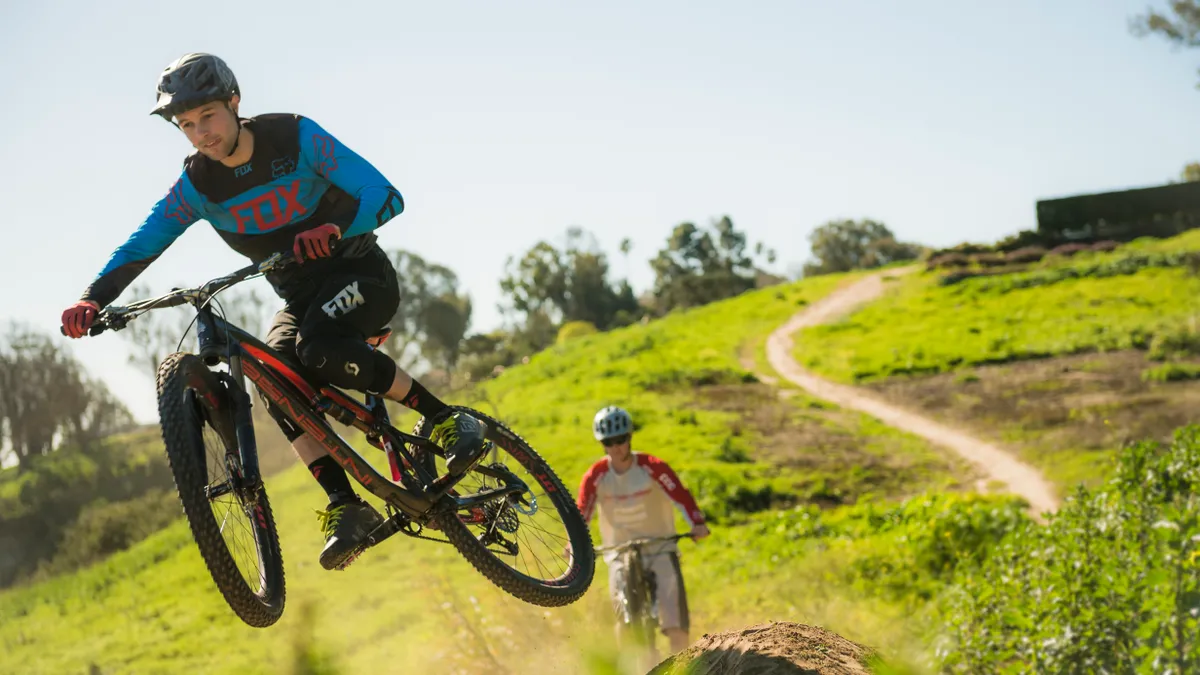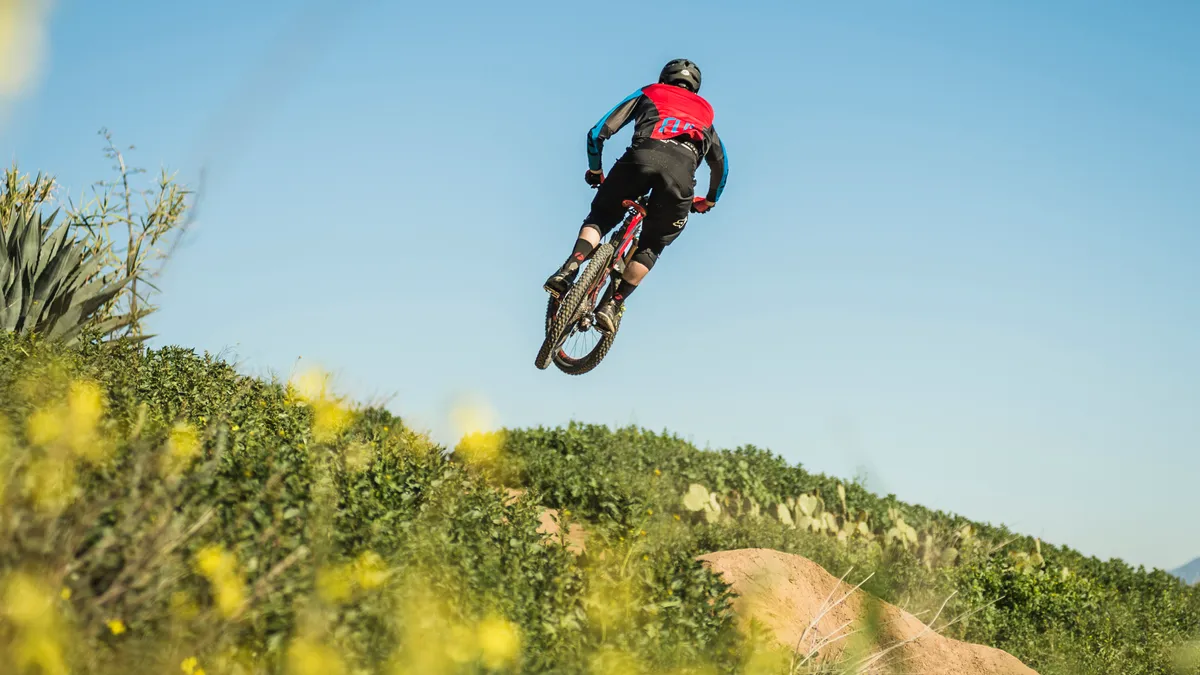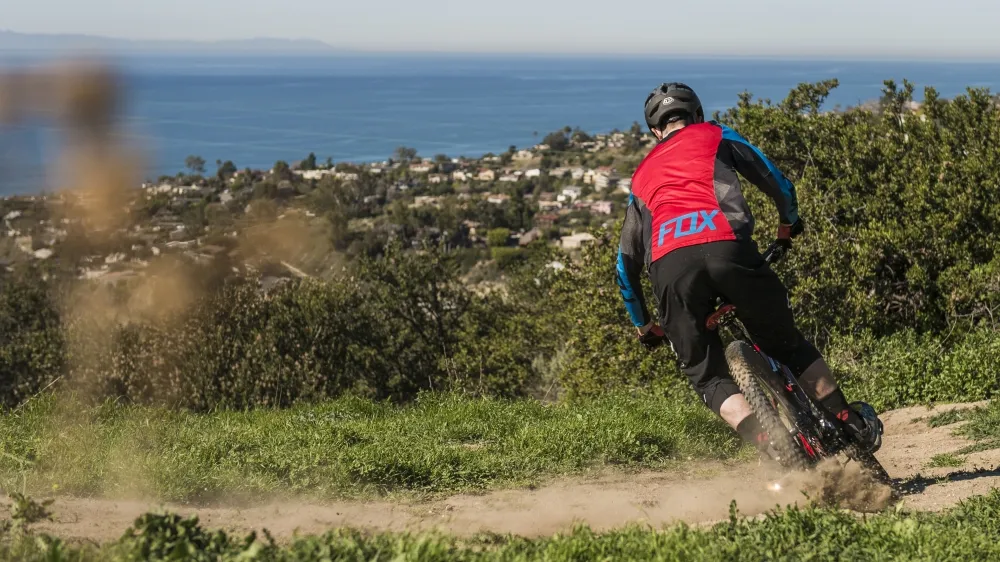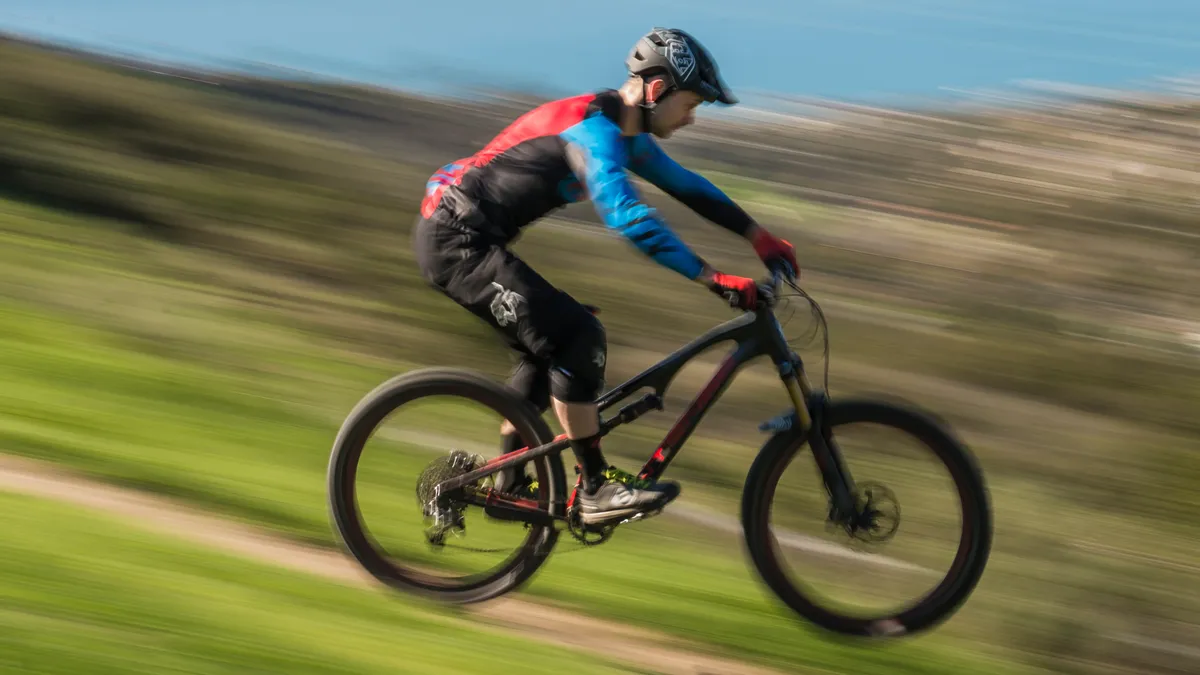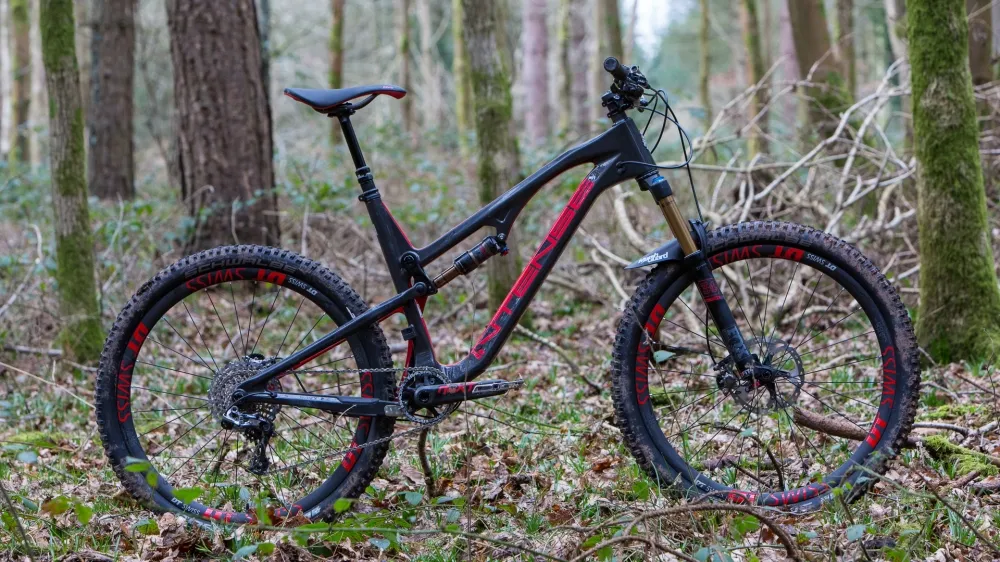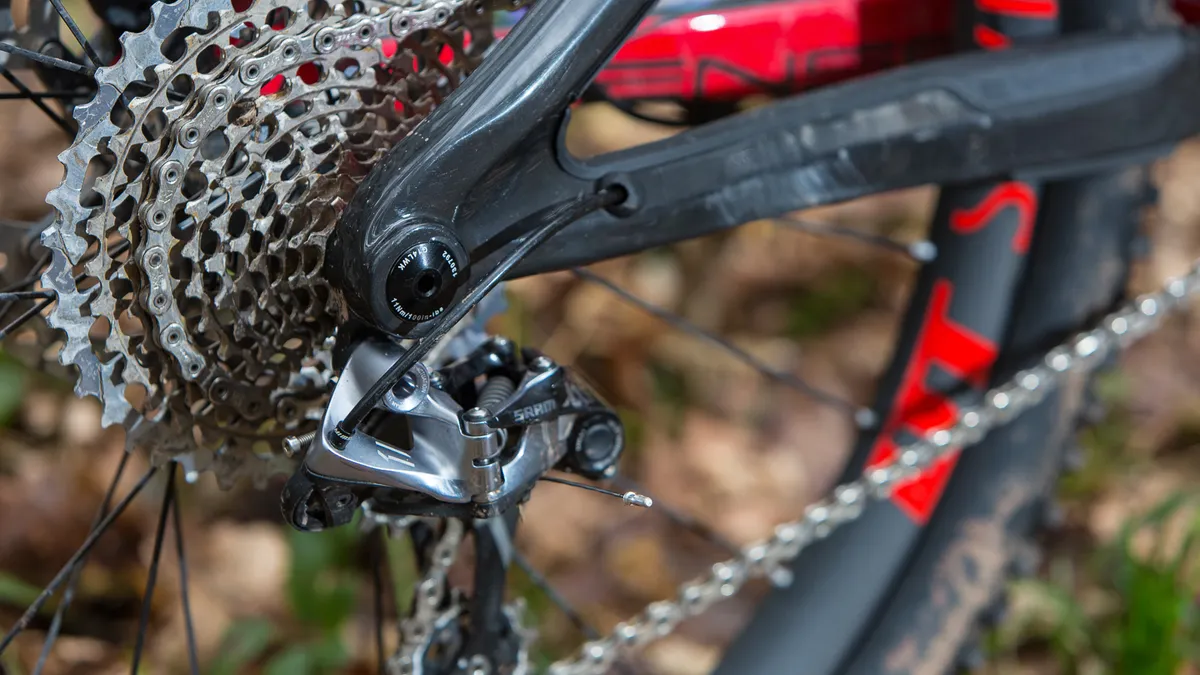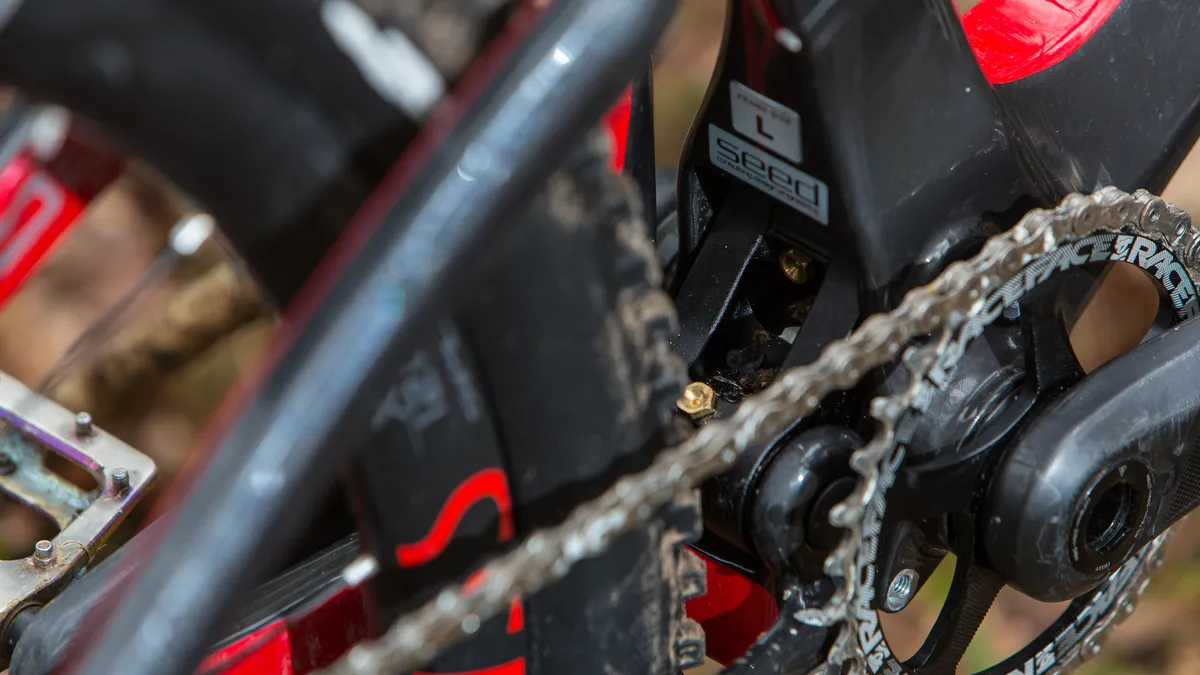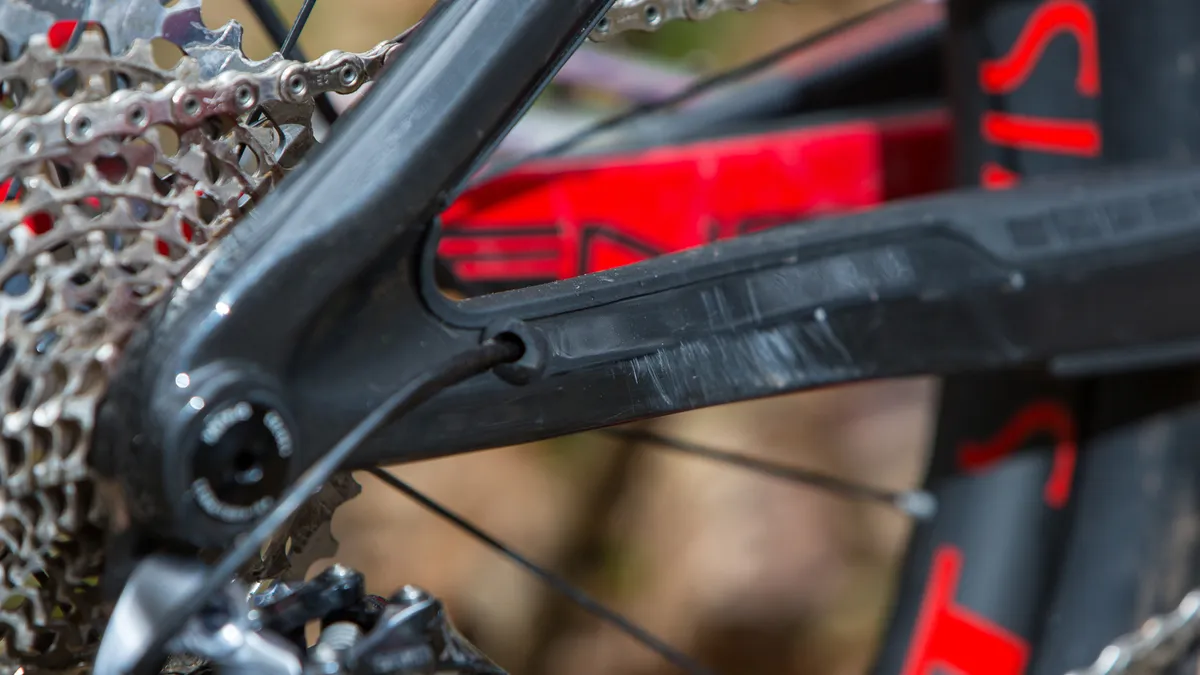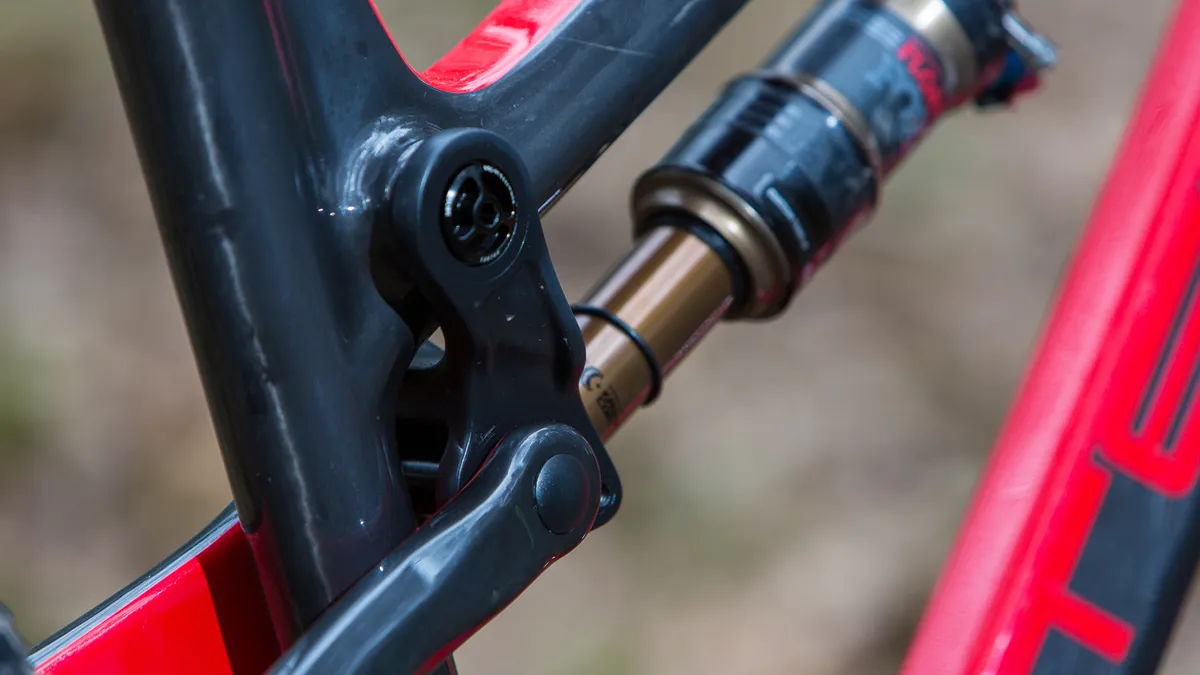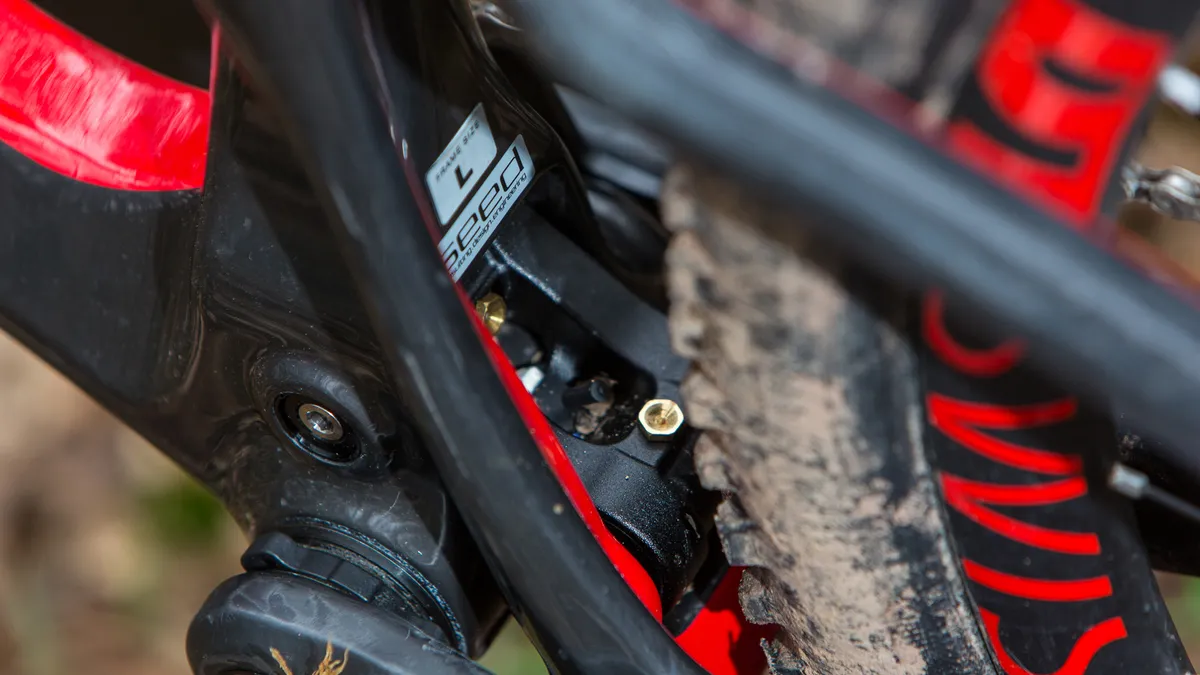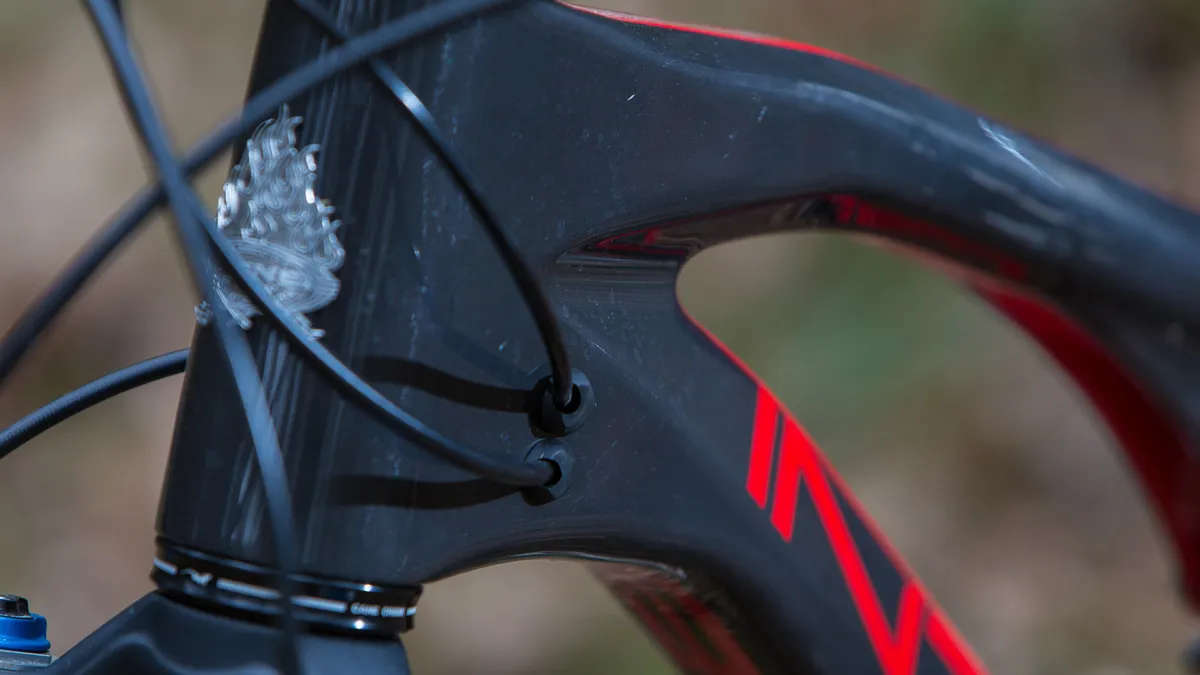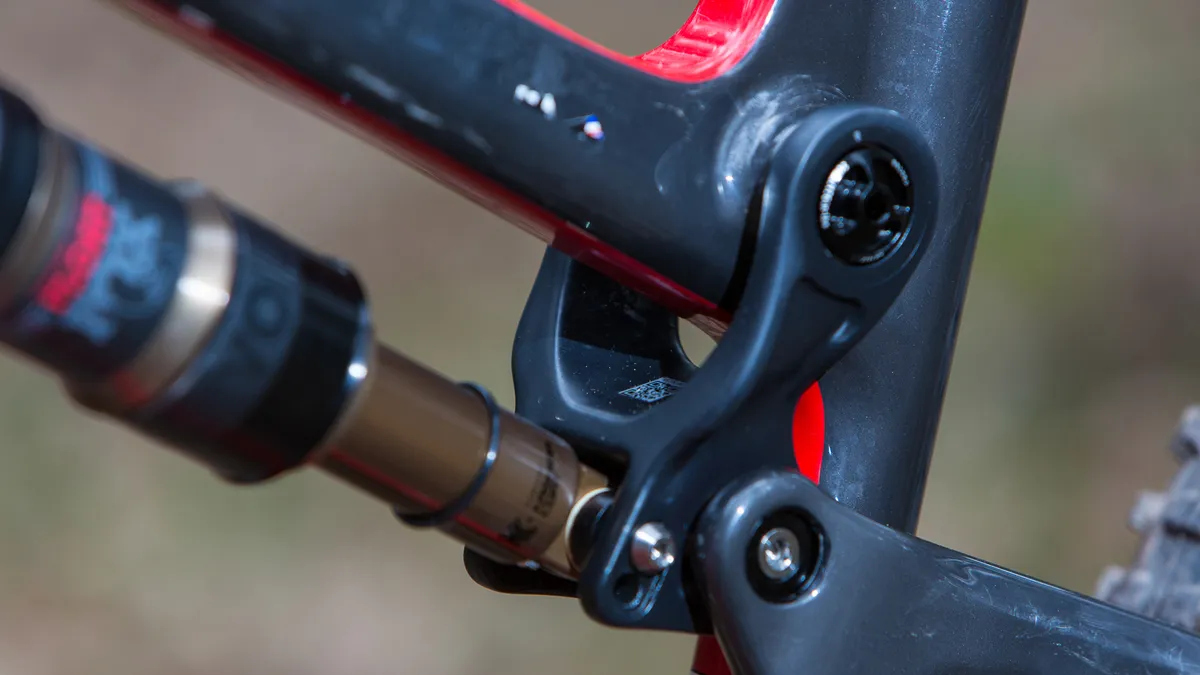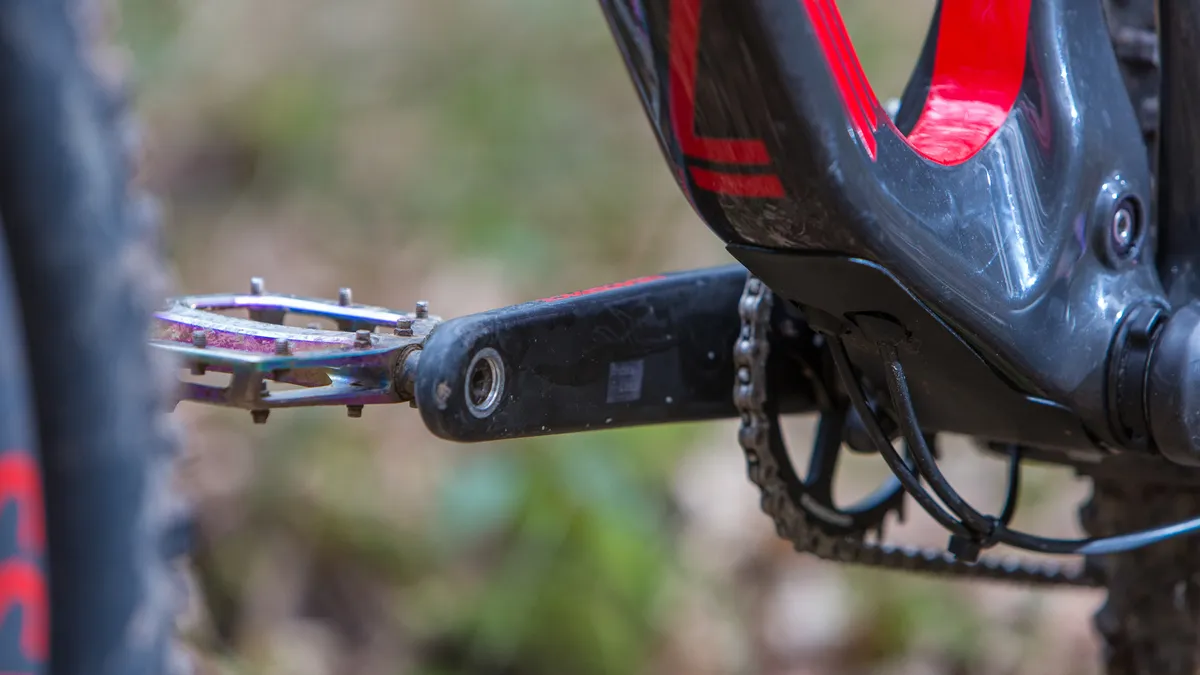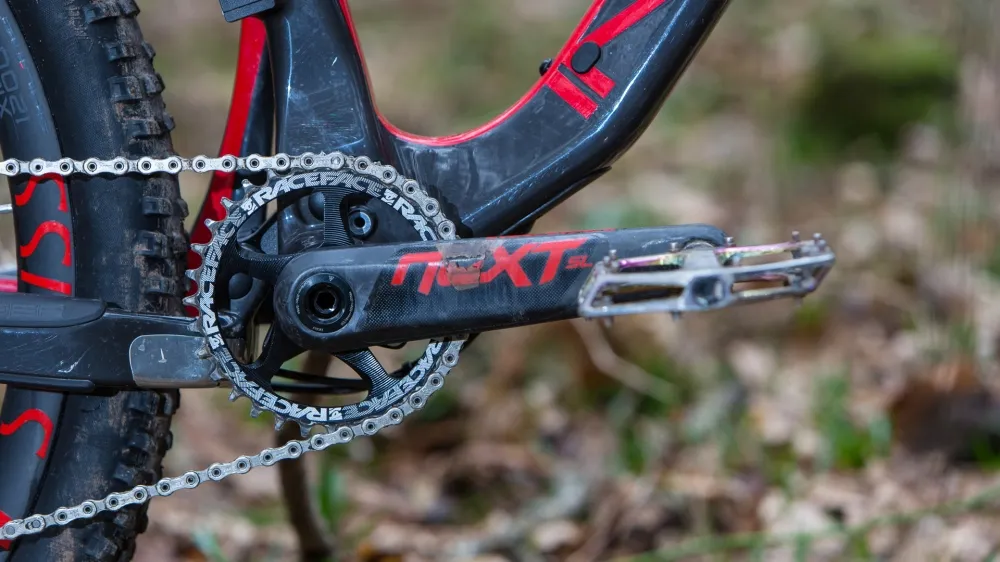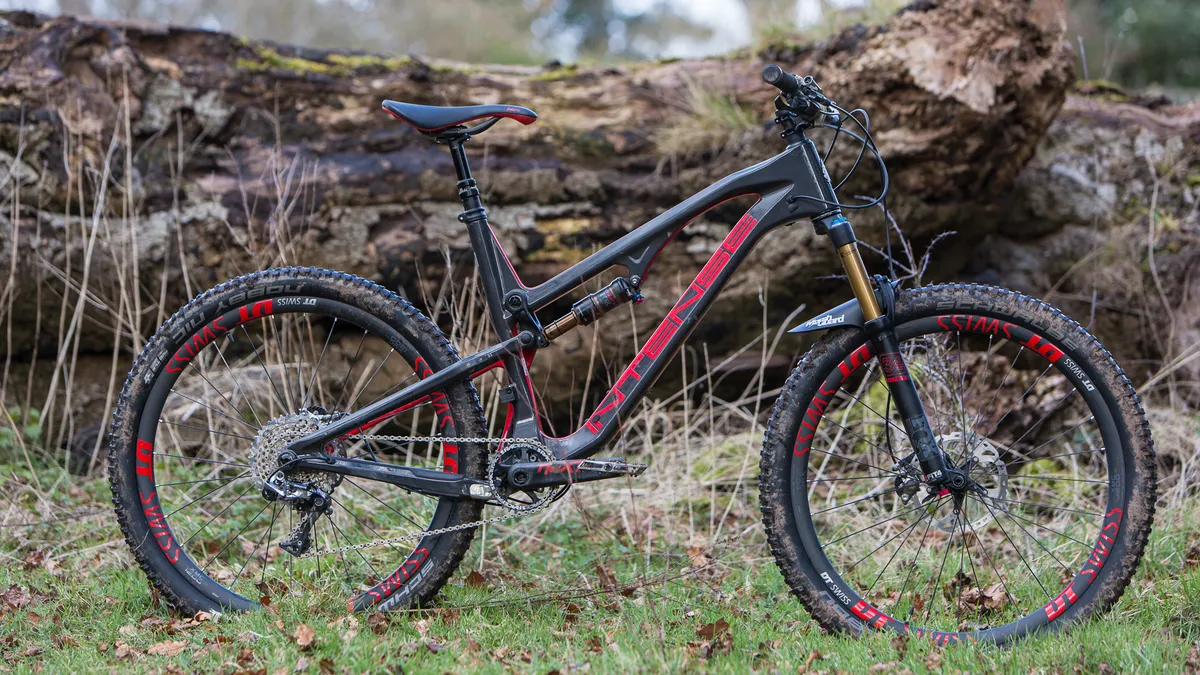Intense has made a name for itself producing niche, quality and ultimately sought-after products. The new Spider 275 Carbon carries a lofty price tag that matches its ambition of no-compromise trail riding performance. But is it worth it?
• Intense Spider 275 Foundation Build - first ride
The Spider isn’t a brand-new design, sharing both its geometry and suspension platform with the alloy-framed model introduced in 2015. As the name suggests, the new bike uses carbon front and rear ends plus a carbon top link on the SL version to help drop weight. You also get Boost 148 rear wheel spacing and a number of other specific details.
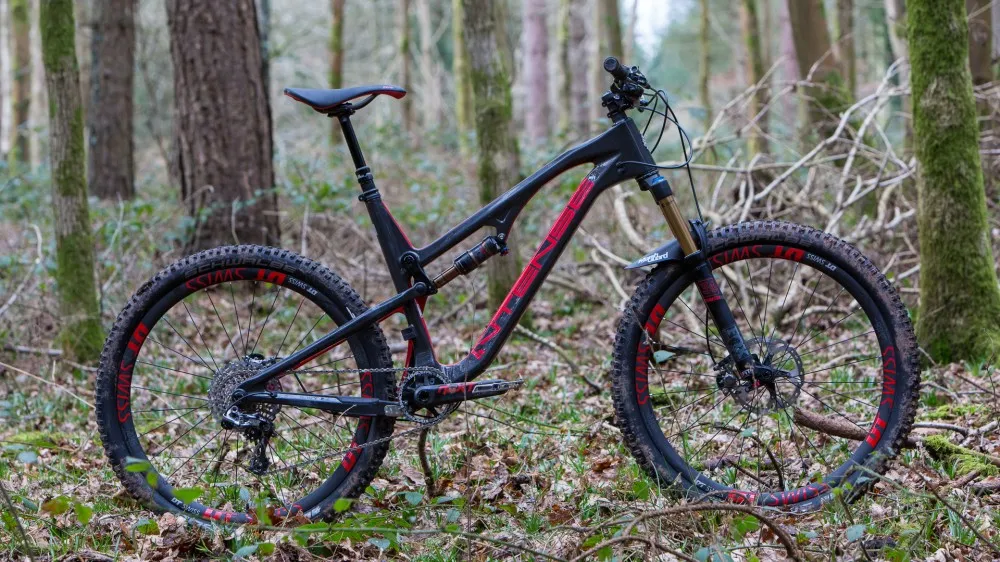
The Spider Carbon is meant to be a do-it-all trail bike
Intense has licensed the VPP suspension design for many years from Santa Cruz and until recently the suspension characteristics have been shared too. Now, though, the license has ended.
Intense claims this new freedom of design has allowed its engineers to explore different suspension avenues. Its new system – dubbed the ‘JS Tune’ – is trickling out across all bikes in the Intense range boasting adapted qualities for each riding style. It's still a virtual-pivot design, using a pair of short linkages like VPP, but there are subtle differences in ride-feel.
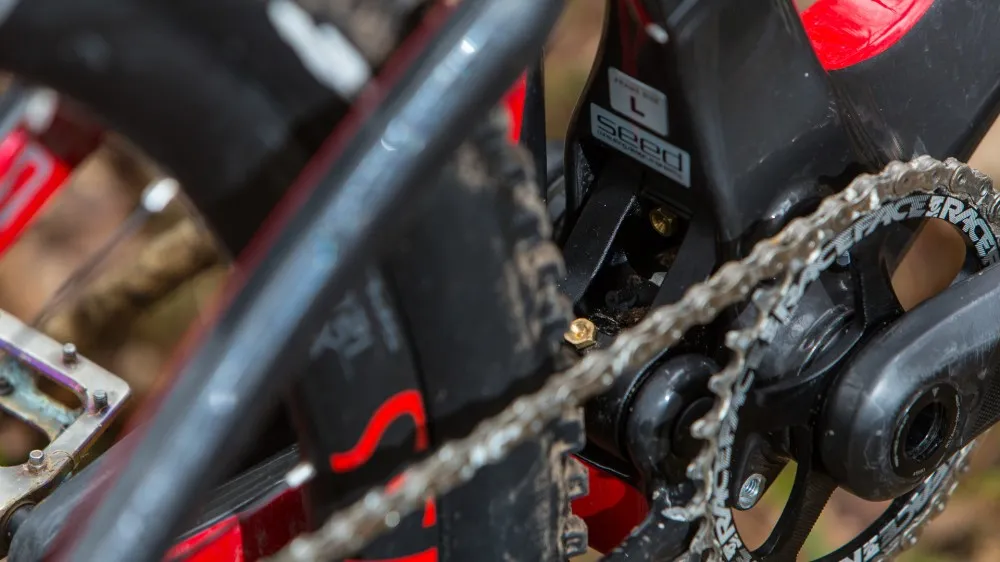
Our 182cm test rider opted for a size large frame
With the ‘i-BOX’ pivot system from the alloy bike retained, meaning that the bike has super short 419mm chainstays, geometry figures are virtually unchanged too. The only figure to have altered is the standover height, which increases by a maximum of 7mm on the medium and large bikes (to 797mm for a large) and just 1mm on the XL.
Other crucial figures include a now-prosaic 67-degree head angle, 75.5-degree effective seat tube angle and 1178mm wheelbase for a large. With a reach of 467mm for that size, it’s neither especially long nor short – I’m 182cm / just under 6ft tall and felt comfortable on a large Spider.
Lighter appetites
The Carbon Spider comes in two frameset options. The regular frame with standard carbon and alloy suspension links weighs a claimed 2.7kg (frame weight). Meanwhile the SL (super light) version has high modulus carbon with thinner frame walls and titanium bolts as standard – and sheds a claimed 215g to come in fractionally under 2.5kg.
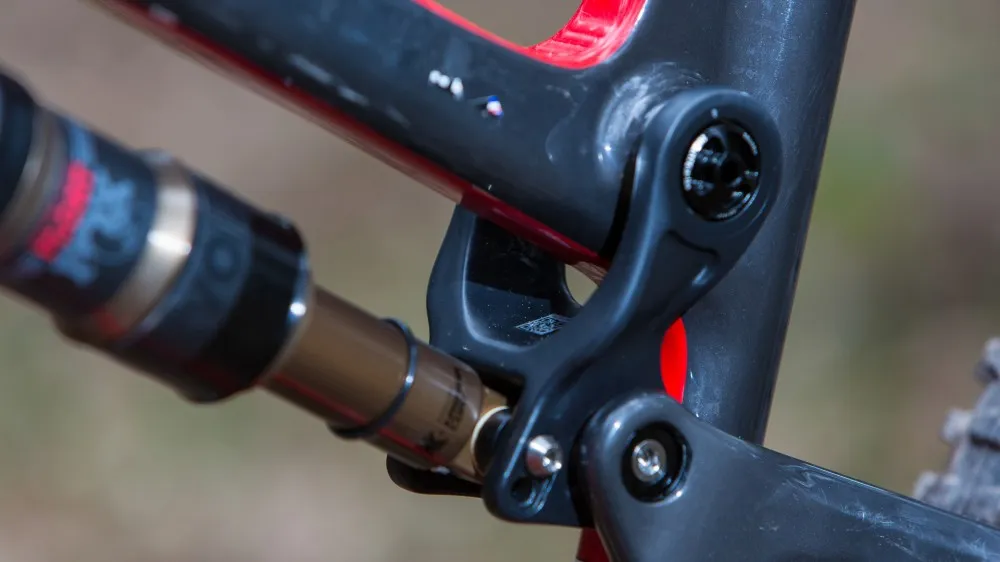
On this SL-level bike, the upper link is carbon too
The smaller details certainly haven’t been overlooked. There are ISCG05 chain device tabs and a front derailleur mount, so whether you’re a descender or a climber by nature the bike is ready to be adapted to your needs.
Features such as internal cable routing, integrated chain- and seatstay protection and down tube protection are all present and correct too. The bike also has two travel settings – a shorter 115mm setting that is progressive and a longer 130mm travel position that sees slightly more linear suspension.
Intense has fitted uncovered cartridge bearings so the user can grease and service them. This may work in the hot climes of So Cal, but I’m a little dubious about how they’ll fare in the slop and grind of the UK.
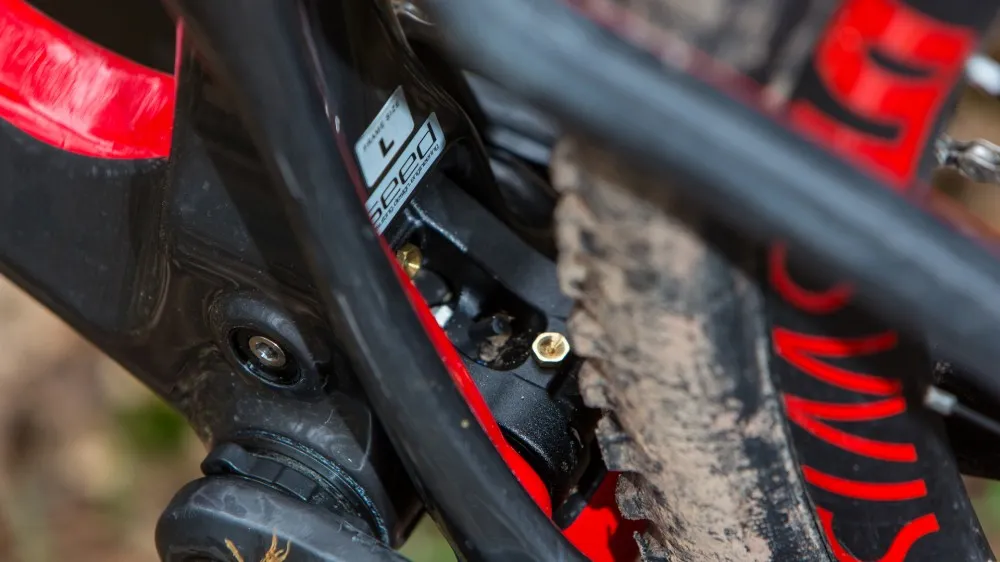
The lower link has a grease port to help keep the bearings running smoothly
In terms of what’s adorning your frame, all models are specced with a 1X drivetrain, plus a dropper post, and there’s a mix of a SRAM and Shimano, Fox and RockShox on offer.
The range kicks off at $4,599 / AU$6,499 for the Foundation build, which sports a Pike RC fork and Monarch R shock, a mix of SRAM GX and NX drivetrain, a LEV 125mm dropper post, SRAM Guide R brakes and Intense branded bar and stem. The Expert, meanwhile, comes in at $5,899 / AU$8,499 and still has a Pike RC, but upgrades to a Monarch RC3, Shimano XT running gear and brakes and a Thompson and Renthal bar and stem combo.
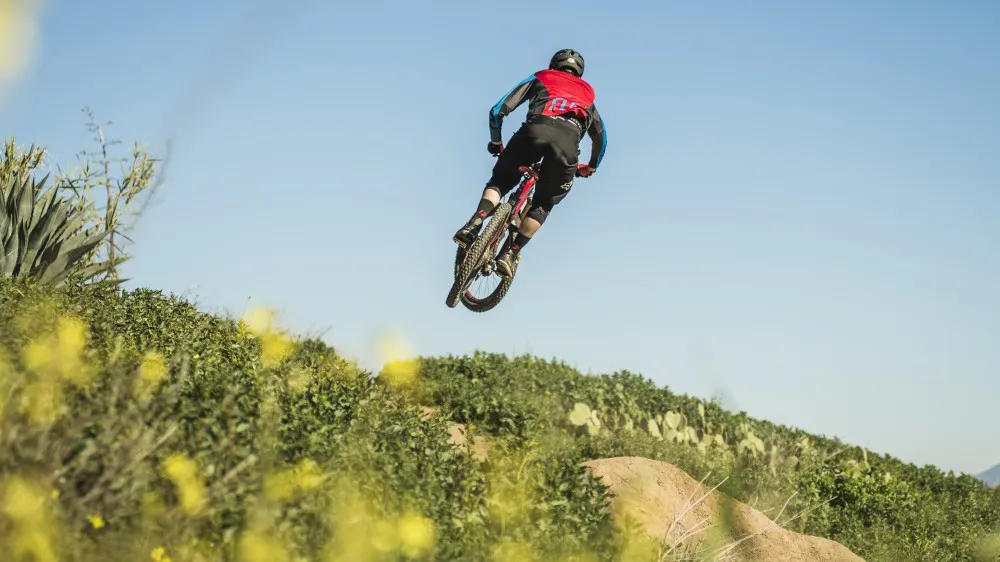
The bike has 115-130mm of rear wheel travel paired with a 130mm fork
The Pro bike (with super light carbon and carbon top linkage) will be the only build available in the UK, costing £5499 / $6,799 / AU$9,999. It features a Fox Performance Float 34 fork and a Fox Float shock, a mix of SRAM XO1 and X1 11-speed drivetrain and Guide RS brakes. For top whack, $9,499 / AU$16,499, you get a Reverb, Fox Factory Suspension, XTR brakes, XX1 drivetrain, carbon DT Swiss XCR1200 wheelset and carbon Renthal bars – plus that super light frame construction and top link. A frame and shock alone will set you back $3,199 / AU$4,999, so if you're keen to get your hands on this boutique bike you'd better get saving.
First impressions: short-travel monster truck with serious potential
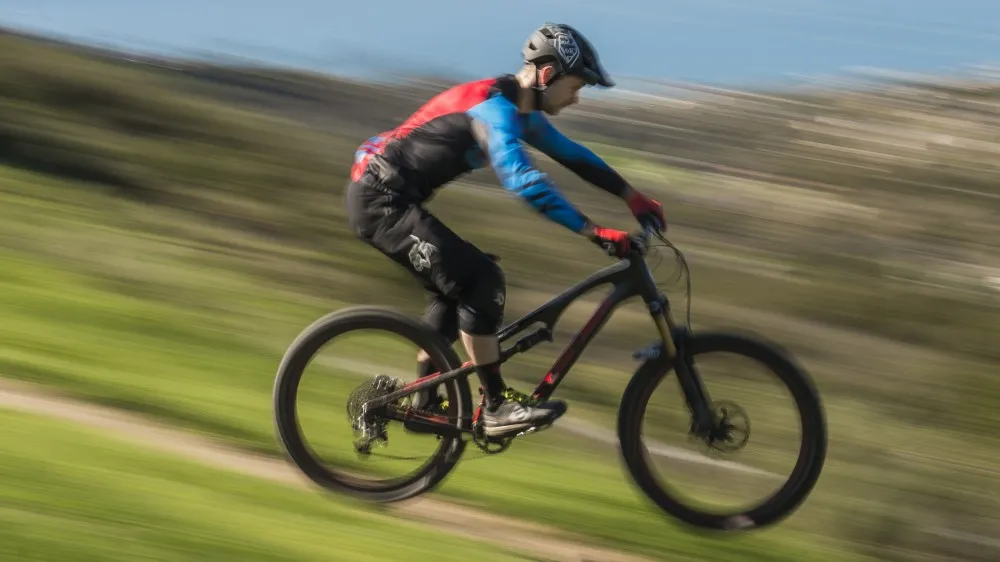
Despite the short travel, this is a very capable bike when things get wild
Hitting the trail, then, what were my first impressions? The top of the range SL model is (did we mention?) light at 11.4kg (25.13lb) and this translates to the trail well – it picks up speed with ease and responds well to body language when riding.
Sometimes light bikes are bumped around and pushed off line by the terrain, but I didn’t feel this when hitting rock sections and braking bumps. The Spider’s inherent properties seem to set it up to absorb the trail’s bump and grind, rather than feeding back unwanted sharp feelings to the rider.
That said, when you crank the pedals there’s still an urgency with how this bike moves forward. And in case you were thinking that a bike that takes the edge off the trail will corner like a blancmange, quite the opposite is true – there’s plenty of snap and pop to reward and excite.
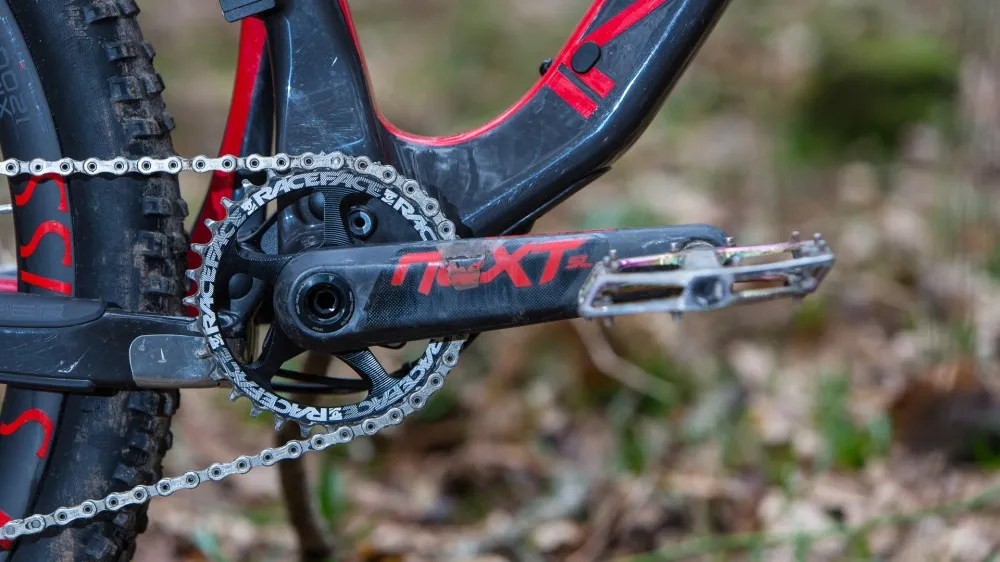
Our Spider Carbon 275 SL bike gets plenty of lightweight carbon bling, like Race Face's Next cranks
The suspension is also a key to this bike’s lively character. The JS Tune suspension hits a sweet spot that we found to be somewhere between bottomless and sensitive – it copes with sharp edges better than we’d expect from a 130mm travel bike and irons out smaller repetitive hits in an impressive manner. When monster trucking through things, bottoming out is virtually imperceptible. It’s hard to nail down whether this is the suspension, frame characteristics or a combination of the two, but whatever Jeff Steber and his team have done to the bike, it certainly works.
Get climbing and there’s virtually no suspension bob, even when running around 30% sag – unless you’ve got an unnecessarily irregular pedalling technique. The bike’s steep 75.5-degree effective seat angle feels great on the way up to the trailhead and on the flat.
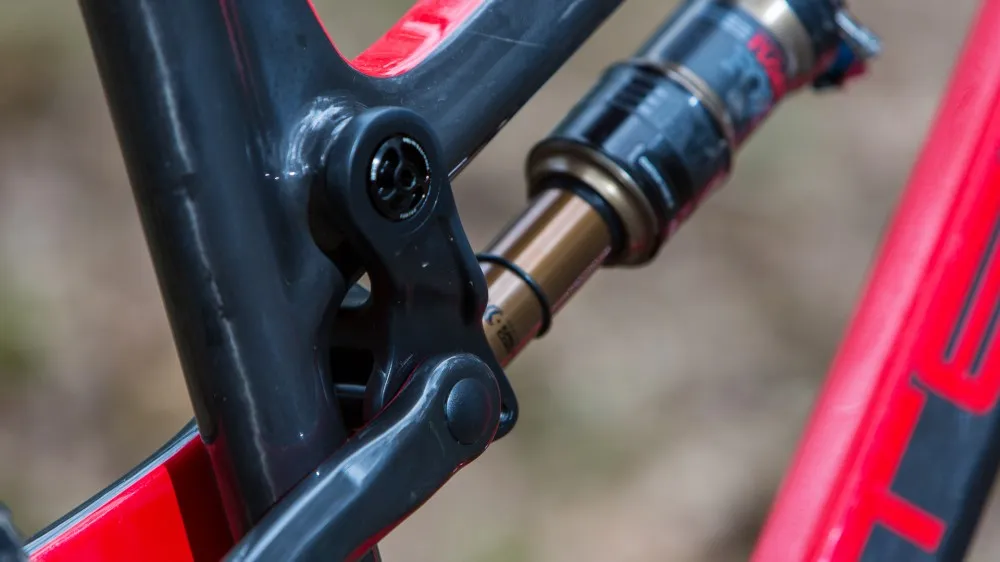
The JS Tune suspension gives good bump performance while taming pedal bob
Sizing wise, the Spider doesn’t introduce anything new or extreme – as already mentioned, at 182cm tall I found a large to be the perfect size. Maybe less confident riders of the same size would want to ride a medium, but it’s certainly worth trying out the bigger bike.
All in all, initial impressions suggest there’s a lot more to this bike than you might assume from its numbers alone. Swing a leg over it and you may find yourself hitting your usual trails with as much confidence and flair as you would on a bike with considerably more travel. We’d definitely recommend you take the Spider off piste and sample what its very capable chassis has to offer when things get wild.
As well as being fun, playful and light there appears to be an inherently forgiving quality built into this bike. I’d be interested to ride a lower-specced bike to see if the same feelings could be garnered from riding it. While the one-bike quiver is always a bold claim, if those sensations translate across the range then Jeff Steber and Intense are clearly onto something.
